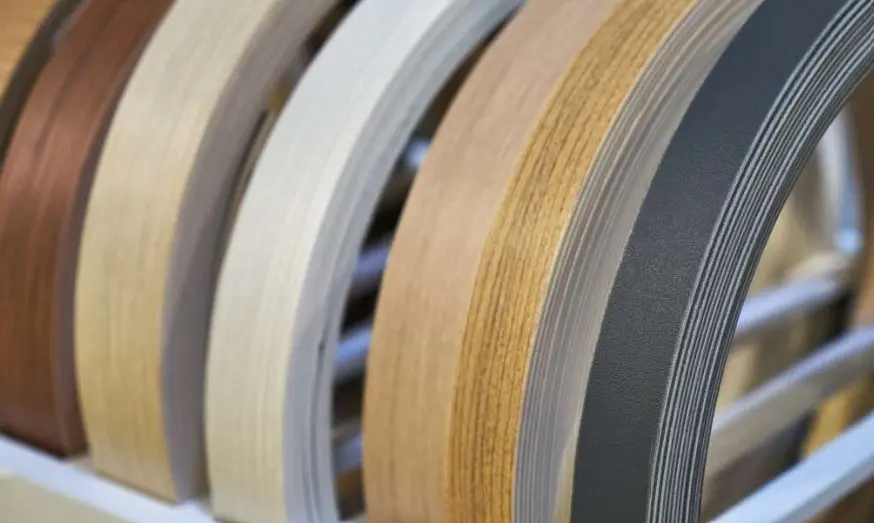Edgebanding is a crucial manufacturing process that enhances the durability and aesthetics of materials like plywood and MDF. Advancements in edgebanding techniques are enabling higher precision and efficiency. Tools like the Hand-held Edgeband fine scraper are essential for smooth finishes. These developments are not just minor upgrades but pivotal shifts in how manufacturers approach edgebanding, turning it into a seamless part of the production process that saves time and resources. In an era where precision is crucial, businesses must invest in the right technology to meet consumer expectations for perfection.
Introduction to Edgebanding
Edgebanding is a pivotal process that adds value to wood-based panels by enhancing their appearance and longevity. Originating several decades ago, it has evolved from simple manual applications to sophisticated automated processes. At first, a hand-held edgeband fine scraper was used to conceal the material’s bare edges. However, it also significantly impacts the finished product’s quality and design. The evolution of edgebanding technology reflects the increasing sophistication in consumer demand and the need for precise, high-quality finishes that stand out aesthetically while strengthening the item structurally.
The Importance of Precision in Manufacturing
Precision in manufacturing is not just about aesthetics; it directly influences the product’s durability and customer satisfaction. A product with precisely applied edges resists daily wear and tear better, ensuring it stands the test of time. This precision also contributes significantly to a product’s visual appeal and perceived quality. Manufacturers must prioritize precision in their production processes, as minor imperfections can lead to significant long-term issues, including customer dissatisfaction and increased returns and repairs. The quest for precision has led to the adoption of advanced machinery and techniques capable of producing even the most intricate designs with immaculate accuracy.
Recent Advances in Edgebanding Technology
The realm of edgebanding has seen remarkable innovations. Technologies such as laser edgebanding allow seamless edges without adhesive, increasing speed and finish quality. Improvements in automation have also reduced material wastage, offering economic and environmental benefits. These advancements mean manufacturers can produce higher volumes with fewer errors, ensuring a faster return on investment and even opening up new possibilities in design flexibility without sacrificing quality. Innovations like laser technology provide a faster edging process and contribute to more consistent and durable bonding, meeting the evolving standards of excellence in product manufacturing.
Benefits of New Edgebanding Techniques
These cutting-edge techniques offer numerous advantages, including reduced processing time and enhanced product quality. Integrating advanced machinery and tools results in nearly invisible seams, catering to modern design aesthetics that demand perfection. Furthermore, the reduced need for adhesives in some methods results in cleaner production environments and less chemical exposure for workers. The ability to achieve this level of finish also helps companies better compete in markets where aesthetic finish and durability are critical selling points. Additionally, reducing waste and increasing production speed drive lower overall costs, allowing companies to offer competitive pricing without sacrificing quality.
Applications Across Industries
Various sectors benefit from advanced edgebanding techniques, from furnishing to automotive and aerospace. For example, the Woodworking Network highlights how the furniture industry utilizes these processes to offer more refined finishes while maintaining competitive pricing. In automotive applications, precision and durability are paramount, and advancements in edgebanding ensure that interior elements maintain their integrity and appearance over time. The aerospace industry leverages advanced edgebanding to reduce weight and enhance the precision of parts, marrying strength with design elegance. These applications demonstrate the versatility and indispensability of advanced edgebanding across multiple high-demand sectors.
Future Trends in Manufacturing
The trend points towards increased adoption of automated solutions and innovative technology. As AI and machine learning are incorporated into production, we anticipate more self-correcting and adaptable machinery, improving accuracy and efficiency. In the future, machines can actively learn and enhance their operations in real-time, increasing production and decreasing waste. These trends suggest an industry on the brink of brilliant manufacture, where large-scale and custom production can be achieved with remarkable consistency and quality, meeting the rapidly evolving needs of consumers and industry professionals alike.
Sustainable Practices in Edgebanding
The shift towards eco-friendly materials and processes is evident, with sustainability becoming a key focus. Many companies now prioritize using biodegradable adhesives and recycled plastic edging to reduce environmental impact. This focus on sustainability responds to regulatory pressures and reflects growing consumer demand for eco-friendly products. By aligning edgebanding processes with sustainable practices, manufacturers can enhance their market appeal while contributing positively to environmental conservation efforts. These practices include using LED technology to reduce energy consumption during production and sourcing from sustainable material suppliers committed to ethical practices.
Also Read-A Comprehensive Review of Rsweeps Online Casino 777



